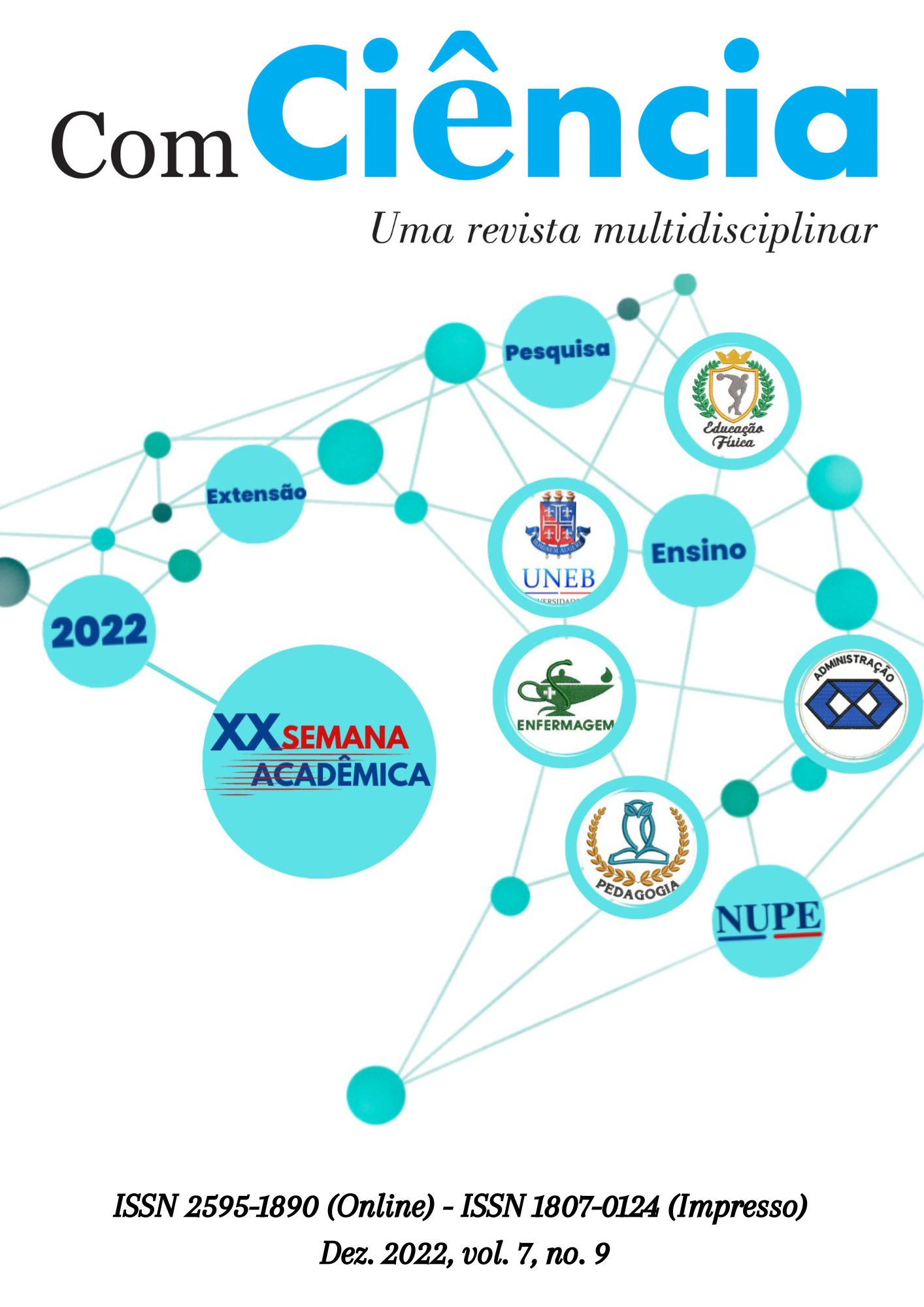Experience report of the project “extensionist action for mothers of premature”
DOI:
https://doi.org/10.36112/issn2595-1890.v7.i9.p171-175Keywords:
Hospital discharge, Home health care, Health education, Premature newbornAbstract
Premature babies are born before 37 weeks of gestation, so they need to be hospitalized. From admission to discharge, parents need to receive guidance to act in a qualified way in providing care to premature infants. The objective of this work is to describe the activities developed by the members of the extension project "Extension actions for mothers of premature babies: recreational and educational activities". This is an experience report of the members of the aforementioned project from May to September 2022. Three face-to-face interventions and five via social networks were carried out, weekly meetings to study scientific articles and organization of interventions for 21 participants. This experience brought the academic community closer to the mothers of premature infants admitted to the neonatal unit of a public hospital, socializing the scientific knowledge acquired at the university and seeking better care for premature infants at home.
Downloads
References
AHUMADA-BARRIOS, M. E.; ALVARADO, G. F. Risk Factors for premature birth in a hospital. Revista Latino-Americana de Enfermagem. v.24, 2016. Disponível em: https://www.scielo.br/pdf/rlae/v24/pt_0104-1169-rlae-24-02750.pdf. DOI: http://dx.doi.org/10.1590/1518- 8345.0775.2750. Accesso em: 08 set. 2022.
ALCÂNTARA, K. L. et al. Orientações familiares necessárias para uma alta hospitalar segura do recém-nascido prematuro: revisão integrativa. Revista de enfermagem UFPE online. Recife, v.11, n.2, 2017. Disponível em: https://doi.org/10.5205/1981-8963-v11i2a11984p645-655-2017. Acesso em: 14 set. 2022.
CARVALHO, N. A. et al. A transição do cuidado do recém-nascido prematuro: da maternidade para o domicílio. Revista Acta Paulista de Enfermagem.v.34, 2021. Disponível em: https://doi.org/10.37689/acta-ape/2021AR02503. Acesso em: 14 set. 2022.
HARRISON M. S., Goldenberg R. L. Global burden of prematurity. Semin Fetal Neonatal Med. v.21, n.2, p.74-9, 2016. Disponível em: DOI: 10.1016/j.siny.2015.12.007. Acesso em: 07 de set. 2022.
LARANJEIRA, A. C. M. Descrição do perfil clínico e epidemiológico do parto prematuro e seus desfechos neonatais. Revista Residência Pediátrica. v.9 n,1, p.36-39, 2019. Disponível em: https://doi.org/10.25060/residpediatr. Acesso em: 07 set.2022.
MARTINELLI, K. G. et al. Prematuridade no Brasil entre 2012 e 2019: dados do Sistema de Informações sobre Nascidos Vivos. Revista Brasileira de Estudo de População, v.38, p.1-15, 2021. Disponível em: http://dx.doi.org/10.20947/S0102-3098a0173. Acesso em: 07 set. 2022.
SILVA, D. A. et al. A assistência de enfermagem humanizada na Unidade de Terapia Intensiva Neonatal. Research, Society and Development, v. 10, n. 14, 2021. Disponível em: DOI: http://dx.doi.org/10.33448/rsd-v10i14.21903. Acesso em: 07 set. 2022.
SOARES C. J. S. et al. Assistência de enfermagem a família de recém-nascidos prematuros em unidade de Terapia Intensiva. Research, Society and Development, v. 11, n.7, 2022. Disponível em: http://dx.doi.org/10.33448/rsd-v11i7.30000. Acesso em: 14 set. 2022.
World Health Organization. Preterm birth. Geneva: WHO, 2018. Disponível em: http://www.who.int/news-room/fact-sheets/detail/preterm-bir. Acesso em: 07 de set. 2022.
Downloads
Published
How to Cite
Issue
Section
License
Copyright (c) 2023 Revista ComCiência, uma Revista multidisciplinar

This work is licensed under a Creative Commons Attribution-NonCommercial 4.0 International License.





